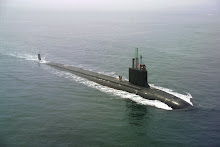Critical Significance of Human Factors in Ship Design
homas G. Dobie, M.D., Ph.D., FRAeS
Director, National Biodynamics Laboratory
University of New Orleans
Proceedings of the 2003 RVOC Meeting, 8 – 10 October, 2003
Large Lakes Observatory, University of Minnesota
ABSTRACT
There is a critical need for a human factors input whenever technology and people
interact. When systems are functioning well, few seem to appreciate that this smooth
operation is largely due to the prior thought and effort that has gone into optimizing the
human factors element; when disaster strikes, however, there is a sudden demand for
immediate rectification. As the ship design evolves and crew sizes diminish, even greater
emphasis should be placed upon the man/machine interaction in order to ensure safety
and efficiency during both routine and emergency operations. Severe ship motions limit
the human ability to operate command and control and communication systems,
navigate, perform routine maintenance and prepare food. In an emergency, such
operations as refueling at sea and damage control can be severely hampered. The
human being is susceptible to degraded performance in a number of ways. There are the
purely physical limitations on both gross and fine motor skills imposed by the adverse
effects of heavy seas. The former physical limitations include standing, walking, and
carrying out operational and maintenance tasks that include major whole-body
movements required to perform these types of operations. Fine motor skills include such
fine movements as delicate control adjustments and computer operations. Knowledge of
the sea/hull interaction and its potentially deleterious effect on the physical activities of
crewmembers can provide valuable information for improved ship and equipment design
as well as establishing guidelines for efficient heavy weather operations. In addition,
ship motion can cause significant mental degradation leading to overall performance
decrement and increased potential for injury. Motion sickness is an example of this type
of malady. Seasickness is the most common cause of motion sickness and can have a
profoundly adverse effect on human performance. There is also the sopite syndrome, a
human response to provocative motion characterized by drowsiness and mood changes.
It is not yet clear whether this is due to boredom, inactivity and loss of concentration or
the result of the effects of provocative motion. Whatever, this soporific response can lead
to inefficiency and accident proneness, that is not so readily identifiable by the sufferer
or a supervisor. These motion responses are highly relevant to the RVOC research ship
situation. Not only because of the plans to reduce the number of crewmembers, but also
because a number of the research or academic team members may have little or no
recent experience at sea, particularly in heavy weather. Attention to onboard habitability
issues and fostering a high level of morale among crewmembers are also very important
factors in support of crew retention, particularly in modern ships with smaller numbers
of crewmembers. The author will address these issues and make recommendations to
improve the incorporation of the human element in future ships.
skip to main |
skip to sidebar
كشتي سازي نرم افزار محاسبات طراحي دريا دريانوردي naval architecture,shipdesign,shipbuilding, warship,naval software, crack ,fastship,shipweught, acad,solidworks,catia,hull, expansion,webframe,rhino,RCS, seakeeping,maxsurf,seakeeper
Me:
Search This Blog
old posts
- design (2)
- naval (2)
- ship (2)
- "Approaches to preventing or mitigating adverse effects of ship motion on crew (Bittner (1)
- "Critical Significance of Human Factors in Ship Design" (1)
- "High Speed Marine Vehicles" (1)
- "PERSONNEL MOVEMENT SIMULATION" (1)
- "sea state" (1)
- 1987) Criteria with regard to accelerations and roll [RMS] (NORDFORSK 1987) (1)
- Extrapolation (1)
- Guignard 1985)" (1)
- INTEGRATING (1)
- ISO 2631" (1)
- MOVEMENT (1)
- Methods (1)
- Operability criteria General operability limiting criteria for ships (NORDFORSK (1)
- PERSONNEL (1)
- PRELIMINARY (1)
- SIMULATION (1)
- Seasickness (1)
- Testing (1)
- Testing and Extrapolation Methods High Speed Marine Vehicles Seasickness Fatigue ISO 2631 (1)
- Type of motion cue mismatch produced by various stimuli (Griffin 1991a) (1)
- aRCHITECTURE (1)
- basic (1)
- conceptual (1)
- level (1)
- warship (1)
Blog Archive
-
▼
2009
(23)
-
▼
July
(15)
- Fast Ship Free DownLoad + crack
- shipworks v6
- NAVAL aRCHITECTURE TEXT BOOK
- ship design-basic level
- Critical Significance of Human Factors in Ship Design
- warship naval conceptual design
- Testing and Extrapolation Methods High Speed Marin...
- INTEGRATING PERSONNEL MOVEMENT SIMULATION INTO PRE...
- Approaches to preventing or mitigating adverse eff...
- Criteria with regard to accelerations and roll [RM...
- Type of motion cue mismatch produced by various st...
- MINE WARFARE
- sea state levels table
- DESIGN
- at the first,in the name of GOD
-
▼
July
(15)

